Peat-Chunk Coir Growing Media: Benefits for Extraordinary Drought

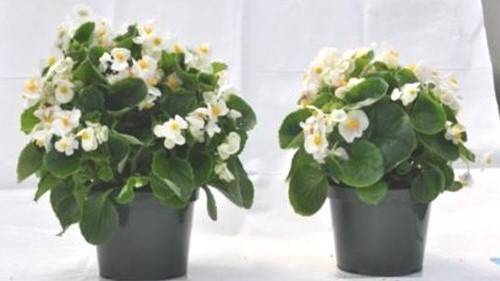
When you think of places in the United States that experience drought conditions, California and Texas often come to mind. However, many other states have experienced abnormally dry seasons causing drought conditions in the past. You would not think that parts of Minnesota and Wisconsin would have moderate drought conditions. In the eastern United States even New York, Pennsylvania, Tennessee, Georgia and Alabama have seen abnormally dry conditions and moderate drought.
For growers, drought conditions can significantly impact water availability and crop production costs. Making the most efficient use of irrigation water is important to conserve this valuable resource. If we look at various types of growing media in terms of water conservation, some are better than others for optimizing water use. For example, bark-based mixes typically are the least efficient for water use and conservation. Bark mixes have the lowest water-holding capacity and highest drainage and require frequent irrigation.
Sphagnum peat moss has the highest water-holding capacity of all the organic materials used as a bulking material for growing media. However, when peat is amended with aggregates such as perlite and/or pumice to increase air porosity, its water-holding capacity is decreased. In comparison, coconut coir can have a high water-holding capacity similar to Sphagnum peat moss, however, it must be carefully processed so that the fibers continue to hold water and the structure is retained.
Coir is mostly used in agriculture and horticulture as the processed pith of the coconut husk. It is often compressed into slabs for greenhouse vegetable production but is rarely used as the sole component for horticulture growing media. For horticulture growing media, coir must be washed and leached to reduce the EC (electrical conductivity) from the naturally occurring salts found in the coconut pith. It is then generally blended with Sphagnum peat moss and other components to form growing media.
Coconut husk is unique in that it can also be cut into various size ’chunks’, which can be used as aggregates for growing media. The benefit is that these coir chunks provide structure and porosity to increase air capacity and drainage of growing media, much like bark and perlite. However, bark and perlite reduce water retention of growing media, whereas coir chunks add porosity and increase water retention. Coir chunks accept water readily and act as small water reservoirs. This is the basis for PRO-MIX® HPCC AGTIV® REACH™. This product contains coir chunks that are cut to a specific size. The addition of chunk coir improves the air porosity of growing media while maintaining a high water-holding capacity.
Coir chunk mixes comparison for drought
60/40 - Peat/Chunk Coir
Plant Variety: HEUCHERA "KIRA OAK"
Started: Transplanted from plug into 1-gallon containers
Evaluation: After 183 days
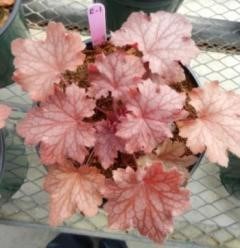
|
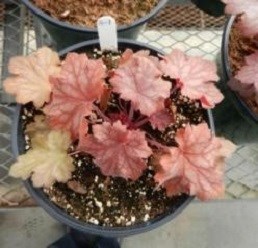
|
Plant Variety: Hosta "Big Daddy"
Started: Hosta root planted into 1-gallon containers
Evaluation: After 17 weeks
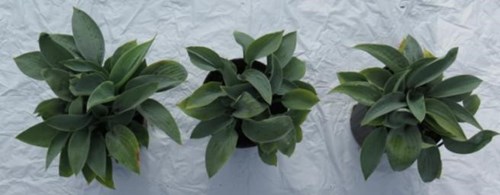
|
PRO-MIX® HPCC AGTIV® REACH™
Plant Variety: Begonia "White"
Started: Begonia plug transplanted into 5-inch pots
Evaluation: 7 weeks after transplanting

|
In our comparative plant growth trials of peat-chunk coir growing media and other standard growing media, peat-chunk coir growing media significantly reduced the need for water and irrigation frequency. Why is this important?
- With irrigating crops, a certain percentage of water runs over and out the bottom of the pot. When irrigation frequency is reduced, fewer water applications equals less water ‘wasted’. On average, there can be up to a 25% reduction of water requirements for chunk coir growing medium compared to standard peat-based growing media. In regions where water is limited, peat-chunk coir growing media can conserve water.
- Cost of Water. Whether water is purchased or you have your own well, there are costs associated with water usage for price/gallons or electric cost for pumps. Peat/chunk coir growing media can reduce water usage resulting in a 25% cost savings. Also, with fewer irrigation applications, there are labor savings, since workers spend less time watering crops.
- Plant growth can be impacted by the temperature of irrigation water. Unless the water in your greenhouse is heated, tap water can be cold. Every time you irrigate crops with cold water, there is a shock to the root zone and the growing medium temperature is reduced. If you water up to 25% less, plant root systems experience less crop stress resulting in improved plant growth.
In regions affected by drought and water restrictions, peat/chunk coir growing media can reduce irrigation frequency and overall water requirements. This type of growing media makes more efficient use of irrigation water for cost savings and reduction of labor costs. For information about how to save water with PRO-MIX®, contact your Premier Tech Sales Representative.
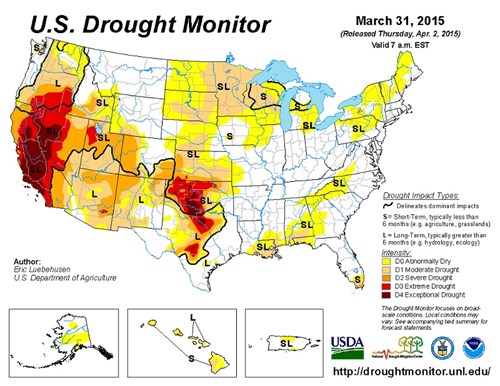
For more information about drought conditions, refer to the U.S. Drought Monitor website droughtmonitor.unl.edu. The US Drought Monitor is a weekly map of drought conditions produced jointly by the National Oceanic and Atmospheric Administration, the U.S. Department of Agriculture, and the National Drought Mitigation Center (NDMC) at the University of Nebraska-Lincoln.